Australia’s Top 10 Largest Companies by Market Cap (2025)
According to the latest data from the World Bank (April 2025 update), the market capitalization of listed domestic companies in Australia stands at approximately 102.6% of the country’s GDP — reflecting a robust and highly developed equity market. This figure represents a slight increase from the 99.19% reported in previous years, underscoring the continued growth and global competitiveness of the Australian Stock Exchange (ASX).
Market capitalization — or market value — is calculated by multiplying a company’s current share price by the total number of outstanding shares across all classes. This metric serves as a key indicator of a company’s size and economic influence. It’s important to note that the World Bank's dataset excludes investment funds, unit trusts, and holding companies whose primary function is to own shares in other publicly listed firms.
Australia’s high market cap-to-GDP ratio signals strong investor confidence, a mature financial system, and active participation in global markets — positioning the country as one of the most dynamic economies in the Asia-Pacific region.
 |
| Top 10 Largest Companies In Australia By Market Capitalization Today |
Top 10 Largest Companies In Australia By Market Capitalization
1. Vanguard US Total Market Shares Index ETF - $380 billion
Sector: Diversified Financial Services
With almost $4 billion invested in it, the Vanguard US Total Market Shares Index ETF (ASX: VTS) is one of the more well-known exchange-traded funds (ETFs).
The Vanguard US Total Market Shares Index ETF is a great way to achieve diversification. It makes investments in over 3,600 businesses, which is a very diverse portfolio. A wide range of industries are represented in the portfolio, but it also places a greater emphasis on expanding companies. Examples of these companies are technology (which makes up 31.9% of the portfolio), consumer discretionary (14%), industrials (12.9%), healthcare (12.2%), and financials (10.9%).
The ETF provides exposure to some of the largest US-listed companies in the world. It provides inexpensive access to a wide variety of securities, enabling investors to take advantage of their long-term growth potential. Since there is no hedging to the Australian dollar, the ETF is vulnerable to changes in the value of the US dollar.
2. BHP Group Limited - $148 billion
Sector: Basic Materials - Industry: Other Industrial Metals & Mining
Anglo-Australian multinational mining, metals, and petroleum company BHP Group Limited is dual-listed on the Australian Securities Exchange and the London Stock Exchange. BHP is engaged in the exploration, extraction, and refinement of hydrocarbons as well as the production, processing, and mining of minerals, particularly coal, iron ore, copper, and manganese ore.
Resources are the focus of BHP Group Limited's operations in Australia, Europe, China, Japan, India, South Korea, the rest of Asia, North America, South America, and overseas. Its segments for coal, iron ore, copper, and petroleum are how it operates. The business is involved in the mining of copper, silver, zinc, molybdenum, uranium, gold, iron ore, and coal used in metallurgy and energy as well as the exploration, development, and production of oil and gas properties. It also engages in potash development activities in addition to nickel mining, smelting, and refining. The company also provides other services, such as towing, freight, marketing and trading, marketing support, finance, and administrative. Melbourne, Australia serves as the company's headquarters. It was established in 1851.
3. Commonwealth Bank of Australia - $130 billion
Sector: Financials - Industry: Diversified Banks
Established in 1911, the Commonwealth Bank of Australia is a financial institution that was formed by a group of different Australian banks.
In addition, the Commonwealth engages in foreign exchange, investment banking, wealth management, treasury services, and insurance. It is a wholly-owned subsidiary of the Australian government and employs more than 6,000 people. This indicates that the government holds all of the company's stock, 100% of which it can use to choose or fire the management team putting it among the biggest banks in Australia and the Asia Pacific area. It operates in over 20 different countries worldwide. The bank has over $211 billion in assets.
4. CSL Limited - $89.64 billion
Sector: Healthcare - Industry: Biotechnology
Leading biotech business in Australia, CSL offers vaccines to help prevent influenza as well as medications to treat various immune deficiencies. In contrast to certain other prominent Australian businesses, CSL receives a sizeable portion of its revenue from overseas markets. Regarding its largest segment, CSL Behring, which produces plasma therapies, the EU/UK and North America combined for 24% of the division's $8.6 billion in sales in the fiscal year 2022, or 49% of the division's total. In contrast, the Asia-Pacific area was responsible for 21%.
CSL has purchased several businesses. These include the Novartis influenza vaccine business, which has since been integrated and is now known as Seqirus, the second-largest influenza vaccine company in the world, Aventis Behring, which is now known as the global biotech leader CSL Behring, U.S. plasma collector Nabi, which helped to form the world's premier plasma collection company in CSL Plasma, and Calimmune, a leader in gene-modification and cell delivery technology.
5. National Australia Bank Limited - $69.44 billion
Sector: Financial Services, Banking Services - Industry: Diversified Banks
Three significant banks are listed as the next largest companies in Australia, beginning with the National Australia Bank. With a market value of AU$69.44 billion, NAB is the second-biggest banking stock in the nation, albeit not by much.
The three regions that comprise the National Bank of Australia are divided into eight divisions:
Australia is the primary source of its business, with operations in business, personal, online, and private wealth.
It runs the Bank of New Zealand in New Zealand, which serves more than a million people there.
Most of its global division is concentrated in Asia.
In 1982, the Commercial Banking Company of Sydney and the National Bank of Australasia merged to form the bank.
6. Westpac Banking Corporation - $61.56 billion
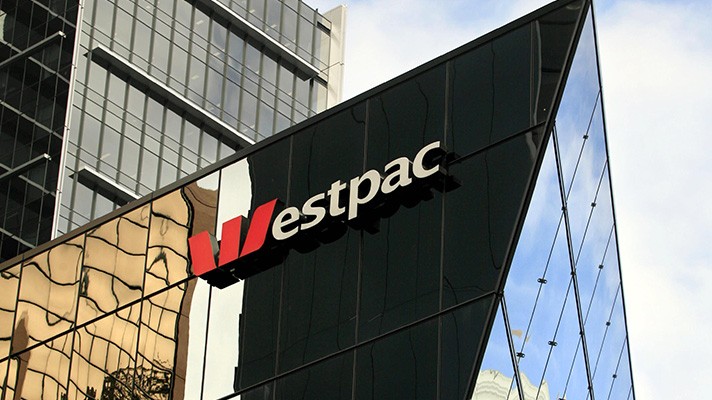 |
| Westpac Banking Corporation |
Sector: Financials - Industry: Diversified Banks
The Westpac Banking Company provides a variety of financial products and services throughout New Zealand and has numerous branches and ATMs worldwide that waive travel fees (as a member of the ATM Alliance). The company employs 40,000 people and serves 14 million customers through its branch network.
To assist small and mid-sized businesses in managing their finances, Westpac provides a comprehensive array of business banking services. The bank offers a number of services, such as international money transfers, accounting, payroll, company formation, and financial management. in addition to credit cards, loans, and business accounts. Additional benefits, like integrated payroll services, might be included with some products.
Westpac Bank provides a range of investment services, including managed funds, shares, and real estate. A variety of investment products are available for purchase, such as managed funds, in which you place your money with a manager who makes investment decisions on your behalf.
7. ANZ Group Holdings Limited - $57.29 billion
Sector: Financial Services, Banking Services - Industry: Banks
ANZ Group Holdings Limited (ASX:ANZ) offers approximately eight million personal and corporate clients banking and financial services. With its headquarters located in Melbourne, Australia, ANZ Bank is the country's third-largest bank. As of 2022, ANZ Banking Group employed 39,196 people. 570 branches of ANZ Bank exist.
The majority of ANZ's profits come from the Australian market, but through its subsidiary ANZ Bank New Zealand, the bank also holds the largest market share in New Zealand. It also has a strong focus on the Asia-Pacific region, similar to many other leading Australian financial institutions.
8. Fortescue LTD - $52.06 billion
Sector: Basic Materials, Mining, Iron and Steel, Metals - Industry: Materials
An Australian corporation with a public listing, Fortescue Metals Group is involved in the mining, energy, and infrastructure sectors.
The three primary industries that comprise Fortescue's business activities are infrastructure development, coal resources, and iron ore production. In order to maintain their leadership positions in their respective industries, its operating divisions also place a special emphasis on a few business lines.
Since January 2015, John Andrew Fortescue has led the company as chairman; his father, Michael John Fortescue, has held the position of executive chairman.
Fortescue Metals Group is a leading participant in its sector, holding stakes in over 20 projects both domestically and internationally. West Australian Iron Ore Company (WAIO), BHP Billiton Limited, Santos Limited, and Atlas Iron (Listed) Limited are a few of its most prominent holdings.
It ranks as the world's fourth-largest iron ore organization.
9. Westfarmers Limited - $48.88 billion
Sector: Consumer Cyclical - Industry: Home Improvement Retail
Wesfarmers Limited is a retailer with operations in Australia, New Zealand, and other countries. Via its Officeworks stores, the company offers a range of retail products and services, including building materials, home and garden improvement, lifestyle, and outdoor living products; apparel and general merchandise, including toys, leisure, entertainment, home, and consumables; and office products and solutions, including stationery, technology, furniture, art supplies, and resources for learning and development. In addition, it offers data backup and recovery services, system security solutions, wireless and wired networking services, hardware and software repairs, and virus and spyware prevention and removal.
In addition, the business produces and distributes sodium cyanide, makes and imports phosphate, nitrogen, and potassium-based fertilizers, supplies polyvinyl chloride resins, and manufactures and distributes ammonia, ammonium nitrate, and industrial chemicals. Additionally, it manufactures and markets industrial, medical, and specialty gases and equipment; supplies tools, safety gear, personal protective equipment, electricals, work wear, and industrial supplies; produces and distributes liquefied petroleum gas and liquefied natural gas; provides and distributes maintenance, repair, operating products, and industrial safety products and services; and engages in other business ventures.
The company offers retail support services, pharmaceutical distribution, clinical cosmetic and skin care treatments, online marketplaces and data sharing platforms, as well as products and services related to health, beauty, and wellbeing. Perth, Australia serves as the headquarters of Wesfarmers Limited, which was established in 1914.
10. Macquarie Group Limited - $46.4 billion
Sector: Financials - Industry: Capital Markets
Macquarie Group is a global provider of wealth management, financial services, and investment banking.
It works in the lending, savings, and retail and wholesale financial services sectors. Not to mention the assets management subsidiary, Macquarie Bank, and Macquarie Capital as subsidiaries.
Worldwide, Macquarie Group provides services to a sizable clientele. Investors in the retail and wholesale markets are among the clients. Standard financial services such as investments, wealth management, insurance, broking, and financial planning are listed on the tickets. as well as guidance, loan arranging, and overall budgeting.
In 1985, Macquarie Bank Limited (MBL), the banking division of the Macquarie Group, became the second private bank to be established in Australia. It provides retail financial services and products, including trade finance, insurance, business and investment banking, superannuation, and personal banking. The bulk of the bank's clientele consists of high-net-worth individuals and family offices. In addition, there are the typical retail banking services like debit and credit card operations, personal banking, and deposit taking.
Full List of Australia’s Largest Companies by Market Capitalization
| RANK | COMPANY | MARKET CAPITAL (USD DOLLAR) | CEO |
|---|---|---|---|
| 1 | VANGUARD US TOTAL MARKET SHARES INDEX ETF | $380 billion | Mortimer (Tim) Buckley |
| 2 | BHP GROUP LIMITED | $148 billion | Mike P. Henry |
| 3 | COMMONWEALTH BANK OF AUSTRALIA | $130 billion | Matt Comyn |
| 4 | CSL LIMITED | $89.64 billion | Paul McKenzie |
| 5 | NATIONAL AUSTRALIA BANK LIMITED | $69.44 billion | Ross McEwan |
| 6 | WESTPAC BANKING CORPORATION | $61.56 billion | Peter King |
| 7 | ANZ GROUP HOLDINGS LIMITED | $57.29 billion | Shayne Elliott |
| 8 | FORTESCUE LTD | $52.06 billion | Dino Otranto |
| 9 | WESFARMERS LIMITED | $48.88 billion | Rob Scott |
| 10 | MACQUARIE GROUP LIMITED | $46.4 billion | Shemara Wikramanayake |
| 11 | GOODMAN GROUP | $38.79 billion | Gregory Goodman |
| 12 | WOODSIDE ENERGY GROUP LTD | $38.09 billion | Meg O'Neill |
| 13 | TELSTRA GROUP LIMITED | $28.83 billion | Vicki Brady |
| 14 | TRANSURBAN GROUP | $27.46 billion | Michelle Jablko |
| 15 | WOOLWORTHS GROUP LIMITED | $25.92 billion | Bradford Banducci |
| 16 | WISETECH GLOBAL LIMITED | $20.26 billion | Richard White |
| 17 | ARISTOCRAT LEISURE LIMITED | $19.38 billion | Trevor Croker |
| 18 | JAMES HARDIE INDUSTRIES PLC | $17.58 billion | Harold Wiens |
| 19 | QBE INSURANCE GROUP LIMITED | $16.59 billion | Andrew Horton |
| 20 | REA GROUP LIMITED | $16.01 billion | Owen Wilson |
| 21 | SANTOS LIMITED | $15.29 billion | Kevin Gallagher |
| 22 | COCHLEAR LIMITED | $14.53 billion | Dig Howitt |
| 23 | COLES GROUP LIMITED | $14.32 billion | Leah Weckert |
| 24 | BRAMBLES LIMITED | $14 billion | Leah Weckert |
| 25 | XERO LIMITED | $13.29 billion | Sukhinder Singh Cassidy |
| 26 | PILBARA MINERALS LIMITED | $8.09 billion | Dale Henderson |
| 27 | THE LOTTERY CORPORATION LIMITED | $7.43 billion | Sue van der Merwe |
| 28 | STOCKLAND | $7.15 billion | Tarun Gupta |
| 29 | MEDIBANK PRIVATE LIMITED | $6.88 billion | David Koczkar |
| 30 | PRO MEDICUS LIMITED | $6.83 billion | Sam Aaron Hupert |
FAQsA market cap: what is it?The total value of a company's outstanding stock shares is known as market capitalization. This figure is derived by multiplying the total number of outstanding shares by the stock's current market price. A company with 10 million shares, for example, valued at $10 a share, would have a $1 billion market capitalization. What does a large market capitalization indicate?In essence, market capitalization indicates the amount of value that a business provides to the market. These companies are the most valuable in the world, according to investors. They may be a safer investment than businesses with smaller capitalizations or less experience in the market because of their degree of liquidity and trust. Why is market capitalization important?Investors can evaluate a company's worth to the public and other investors with the aid of market capitalization. The organization quotes her as "bigger" the more valuable. A company's value as an investment increases with its number of supporters since it becomes more difficult to unseat when conditions grow more difficult and unstable over time. |
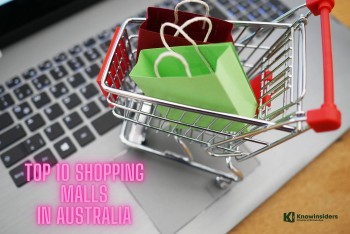 Top 10 Best Shopping Malls In Australia 2024/2025 Top 10 Best Shopping Malls In Australia 2024/2025 Although most people associate Australia with the Great Barrier Reef or the Outback, this South Pacific nation is also home to some of the most ... |
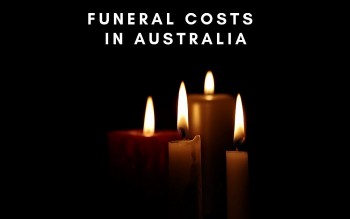 Funeral in Australia: Cost, Ultimate Guide, Insuranc and Most Expensive To Die Funeral in Australia: Cost, Ultimate Guide, Insuranc and Most Expensive To Die In actuality, some Australian cities have higher death rates than others. What is the current cost of burying a person in Australia? |
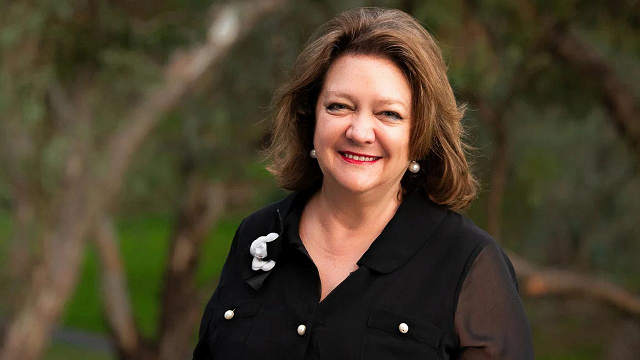 Who is Gina Rinehart - Richest Person in Australia: Biography, Personal Life And Net Worth Who is Gina Rinehart - Richest Person in Australia: Biography, Personal Life And Net Worth New data from the Forbes Rich List for 2024 has identified Australia's top billionaires who are still adding to their wealth. |
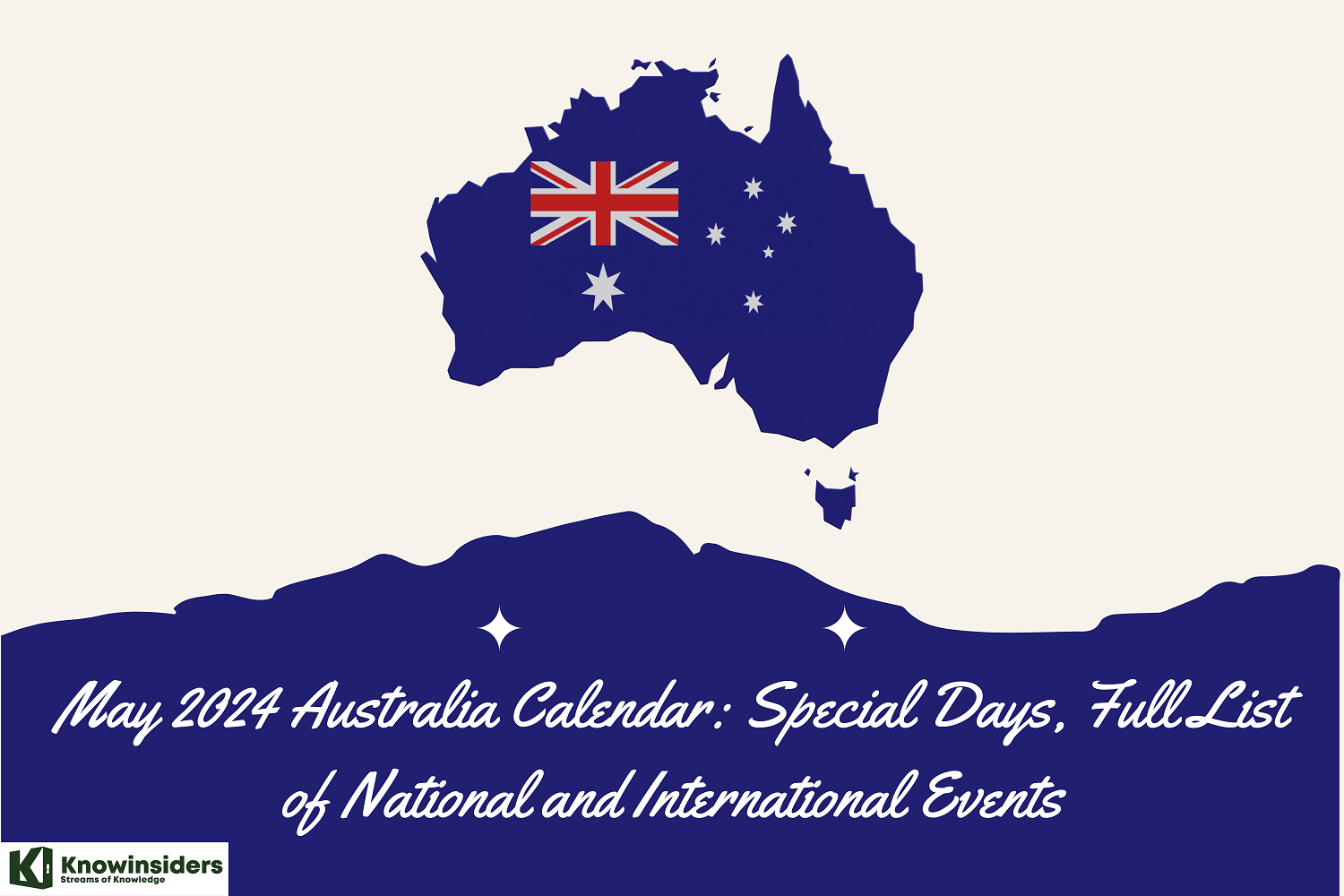 May 2024 Australia Calendar: Special Days, Full List of National and International Events May 2024 Australia Calendar: Special Days, Full List of National and International Events Making travel plans around Australia's public holidays will help you make the most of your well-earned time off. For those who would like to learn ... |























